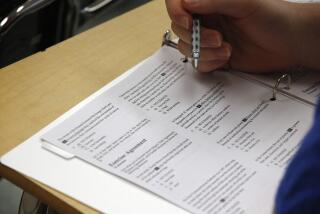Education by Satellites
- Share via
I applaud your article concerning the use of satellites in providing education to rural public schools (Part I, Nov. 4). The Oklahoma State System and the Texas-based TI-IN network have led the way in the use of broadcast technology for isolated schools. This trend, although still in its infancy, will help promote equal access to scarce educational resources and will insure that students won’t be penalized by where they live.
In California, beyond the fine work done by our sister campus, Cal State Chico, there are several other programs which electronically deliver education to public schools. The California State University system has made the development of a satellite demonstration program between its campuses and the public schools a priority. The CSU system has recently completed the construction of a mobile satellite linkup and will begin delivering in-service training courses for teachers by satellite next month. Cal Poly, Pomona, as well as Cal State Sacramento, Stanislaus, and Chico each will be producing and delivering offerings to teachers throughout the state.
The Los Angeles County Office of Education, realizing that urban gridlock often equates to rural distance, is in the process of establishing a satellite network linking all 80 of its districts. This novel urban system should be operational within a few months. Districts are responding enthusiastically and are purchasing satellite receiving equipment for installation at local receiving sites. The county office plans to offer teacher training after school, thus eliminating unnecessary freeway driving.
Finally, for the past three years we at Cal Poly, Pomona, have been broadcasting live, interactive university credit courses for advanced students in 18 high schools in Los Angeles, Orange and San Bernardino counties. The network, called “PolyNet,” has won national acclaim as a model linkage between a university and public schools. Students are currently enrolled in courses in psychology, American civilization and computers. Because of high demand, we will expand the delivery of these courses by satellite to rural schools in late March. During the spring quarter, high school students will be able to take beginning university-level courses in engineering and art, and transfer the credit to whatever college or university they ultimately attend. Students will be able to interact with the instructor on the air by telephone.
Media coverage is extremely valuable in sensitizing the public to distance education.
ROBERT THRELKELD
Director
Distance Learning Center
Cal Poly, Pomona
More to Read
Sign up for Essential California
The most important California stories and recommendations in your inbox every morning.
You may occasionally receive promotional content from the Los Angeles Times.










